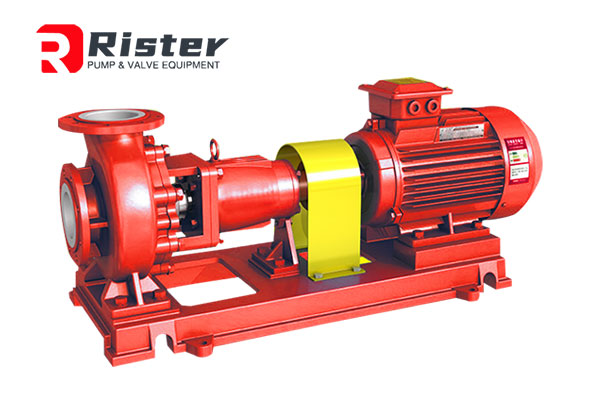What are the causes of mechanical seal failure of chemical centrifugal pump?

Now the common chemical centrifugal pumps, acid-resistant pumps, centrifugal pumps and other recovery mechanical seals (magnetic pumps are static seals) Today I would like to talk about the characteristics of mechanical seals and common causes of failure.
A.there are two main causes of leakage: first, there is a gap on the sealing surface. Second, there is a pressure difference between the two sides of the sealing position, eliminating or reducing any factor can prevent or reduce leakage and achieve the purpose of sealing. The design pressure and service pressure of the pump can not be reduced objectively, so the sealing of the pump is to eliminate or reduce the gap between the sealing surfaces. The gap includes the gap between the sealing surfaces and the gap inside the sealing device.
B.mechanical seal is the main point of modern pump shaft seal. Although it is not easy to use it to achieve complete non-leakage, it is possible to reach a small and acceptable amount of leakage. However, the embarrassing situation often arises in the operation of the pump, so what is the reason for the failure of the mechanical seal?
1.the material selection of mechanical seal is not suitable. The material of the mechanical seal does not match the conveyed medium. In the event of a matter, the sealing element is quickly corroded, dissolved or worn, lining the fluorine centrifugal pump, thus losing the sealing ability. Therefore, according to the nature of the conveying medium, choosing the material of the mechanical seal is a prerequisite to ensure its sealing results and normal life.
2.the flushing condition of the mechanical seal does not meet the design requirements. When conveying media that are easy to crystallize or have fine particles, there must be a certain pressure and a certain flow rate of washing liquid to wash, otherwise the crystals or particles will accelerate the wear of the sealing pair and affect the automatic compensation after the wear of the sealing pair. Therefore, according to the nature of the conveying medium, not only the corresponding flushing pipeline should be set up, but also instruments and devices with monitoring and conditioning results should be installed to ensure that the pressure and flow rate of the flushing fluid meet the design requirements in order to maintain the normal thing of the machine seal. this point is often ignored by users.
3.there is a limit to the pressure that each mechanical seal can withstand. Due to the general prohibition of the pressure in the sealing cavity, the pressure in the sealing cavity is higher than that the mechanical seal can be subjected to, and leakage occurs, which is also one of the common causes of seal failure.
4.the working temperature of the mechanical seal shall not be higher than its designated value. In the design with cooling pipeline, the cooling effect is often reduced due to the insufficient flow of cooling medium; in the design without cooling pipeline, the mechanical seal is often in a state of dry friction due to the storage of air in the sealing cavity. In these two cases, the motion seal of the mechanical seal will be too high and accelerate the wear, resulting in seal failure.
5.when using the single spring mechanical seal, the correct combination of the rotation deviation of the spring and the rotation deviation of the pump rotor also occurs from time to time. Or no description in design, or negligence in assembly, did not increase the spring force of the mechanical seal due to the rotation of the rotor, but on the contrary, the effect resulted in insufficient pressure between the moving ring and the static ring friction pair, resulting in leakage.
6.the serious wear or damage of the bearing causes the serious axial movement of the pump shaft, which is also one of the reasons for the leakage of the mechanical seal. With the growth of science and technology, fluorine-lined centrifugal pumps, new sealing forms and sealing materials are emerging one after another, which must have a direct impact and promotion on the sealing technology of the pump. Pump products with long life and zero leakage will be popularized and applied in more and more places.
Gasket is the basic component of static seal of centrifugal pump, which is widely used. The selection of gasket is mainly based on the factors such as pump transport medium, temperature, pressure and corrosion. When the temperature and pressure are not high, the non-metal sealing gasket is generally selected; when the medium pressure is high, the combined gasket of non-metal and metal is selected. Non-metallic gaskets are generally used in pumps, and their materials are generally paper, rubber and polytetrafluoroethylene.
When the temperature is not higher than 120C and the pressure is below 1.0mpa, green shell paper or molded paper gasket is generally selected. If the conveying medium is oil and the temperature is-30 ℃ to 110 ℃, the styrene-butadiene rubber with good aging resistance is generally selected. When the conveying medium is at-50 ℃ to 200 ℃, fluororubber is more suitable. Because it is not only oil-resistant and heat-resistant, but also has high mechanical strength.
In the chemical pump, because the conveying medium is corrosive, polytetrafluoroethylene is generally selected as the gasket material. As the pump is used more and more widely, there are more and more kinds of conveying media.